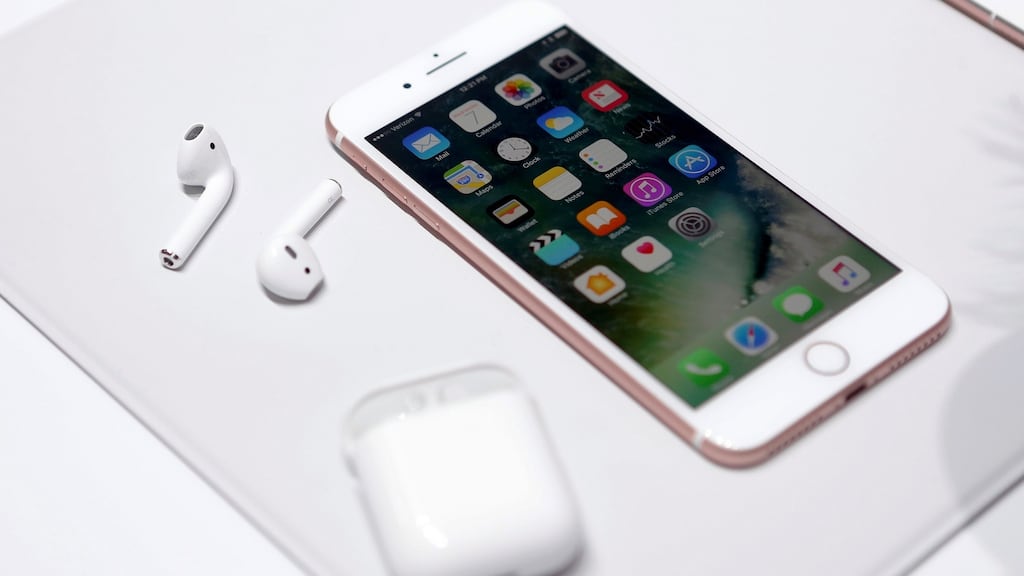The what?
The stereo headphone jack that has been on every phone and audio device you have bought for years. It’s a 3.5mm plug that you connect your headphones or wired speaker to, and you can listen to your music.
Until now, of course.
What’s happening with It?
If you've been ignoring the news for the past few days, you'll have missed that Apple has decided to remove the audio jack from its new iPhone. Many people are not happy about it, because it's going to make things just a little bit awkward for them.
So what do we do for headphones then?
You have a couple of choices. You can use headphones with a lightning adapter, which Apple includes in the box. Or you can try Bluetooth. Handily, Apple has developed the AirPods - a €180 pair of bluetooth ear buds - so you can get right on that.
If you want to cling to your old headphones, the ones you can use with every other device, there’s a lightning to stereo jack adapter in the iPhone 7 box that you can use. It’s not the prettiest of solutions, but it works.
There’s another thing to consider. If you are using lightning adapter headphone rather than wireless, you can’t charge your phone and listen to music at the same time. There’s only one port; you do the maths.
Why did Apple do it?
Depends on who you listen to. Apple SVP Phil Schiller was keen to point out just how old the stereo jack is as an input. Lightning audio, on the other hand, is digital. It shifts the technology and circuitry controlling the audio quality from the phone into the headphones themselves. Switching is progress, and according to Schiller, such a move took a courage. Basically, Apple is dragging us into the digital age in all respects, whether whether we like it or not.
It was also taking up a bit of space, space that Apple wanted to use more effectively for something else. A bigger battery maybe. Or the taptic feedback engine for the solid state home button that is also in the iPhone 7.
The iPhone’s waterproof rating is another reason being floated for the removal of the jack. The iPhone 7 is the first of Apple’s phones to get an IP rating, and you can drop the phone into water for up to 30 minutes and a depth of one metre. While it’s unlikely that you will push that to its limits, it does mean that those who have sent phones to the big iPhone graveyard in the sky after a quick dip in the sink/a puddle/the toilet will now be able to relax a little.
But there are waterproof phones that use headphone jacks?
Yes, there are. Samsung, Sony and Motorola have all put out phones that are waterproof and keep the stereo jack. There have been some complaints raised about the resistance of the Galaxy S Active 7 to water, but the headphone jack is not necessarily at fault here.
This doesn’t counter the analogue versus digital argument though.
Analog isn’t always bad though, is it?
No, look at the resurgence of vinyl. Plus the good thing about the headphone jack is that you could rely on it. It didn’t who made the headphones and if it was the same manufacturer as the company that made your phone. It was open, it was ubiquitous and it was easy. You plugged in the cable and it worked.
That also doesn’t take into account the other devices that use the headphone jack. Microphones, medical devices such as blood pressure monitors, and card readers have all used the port in the past.
But it’s just one phone, right?
Technically, two iPhones – the iPhone 7 and 7 Plus. But no, it’s not just Apple that has experimented with ditching the headphone jack; Motorola’s Moto Force and Force Z also appeared minus the headphone jack, and it barely caused a ripple of protest.
Now Apple has opened the floodgates though, who knows who will be next to jump.
So what’s the solution?
Tape that adapter to the back of your iPhone 7 and hope for the best.













